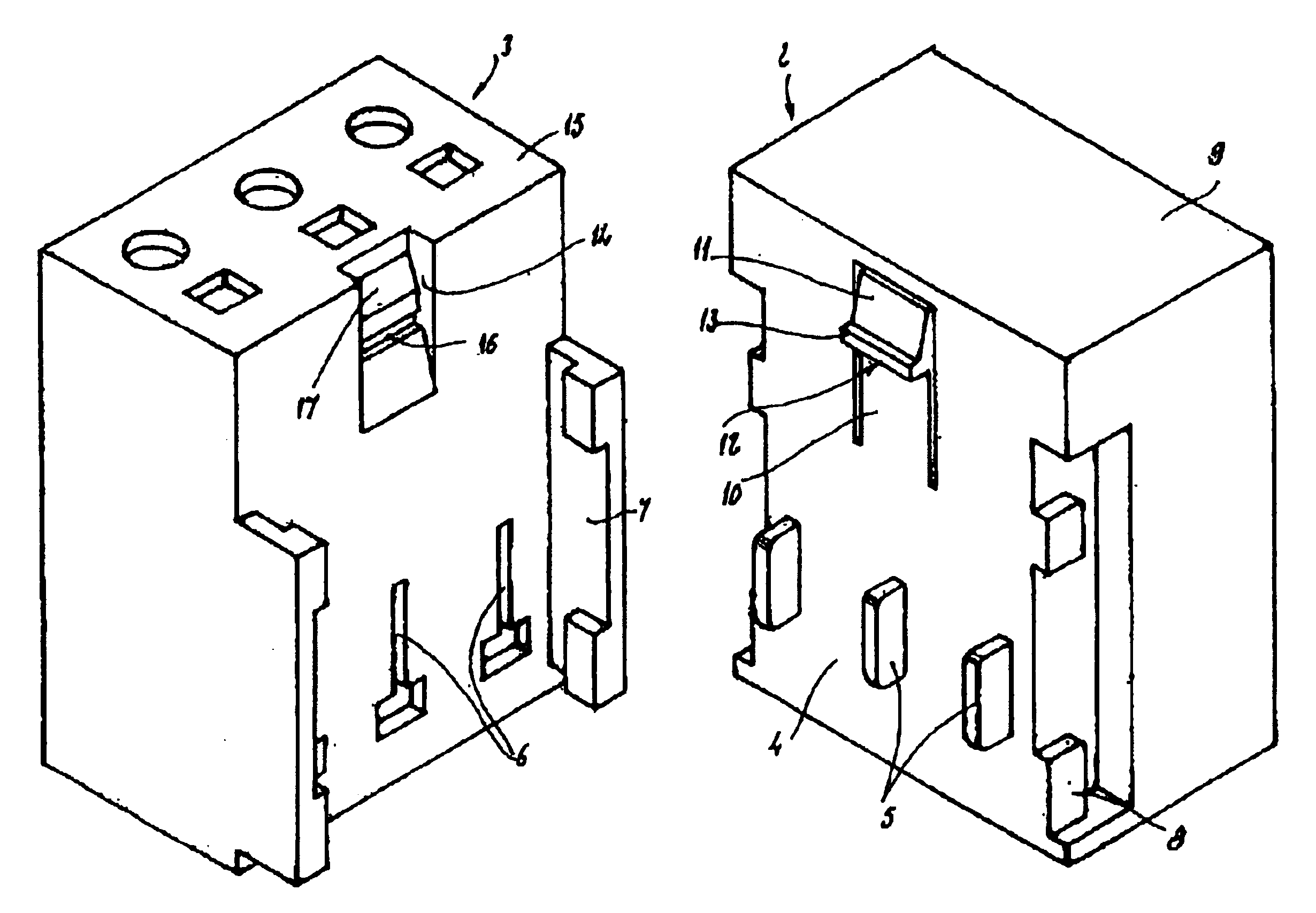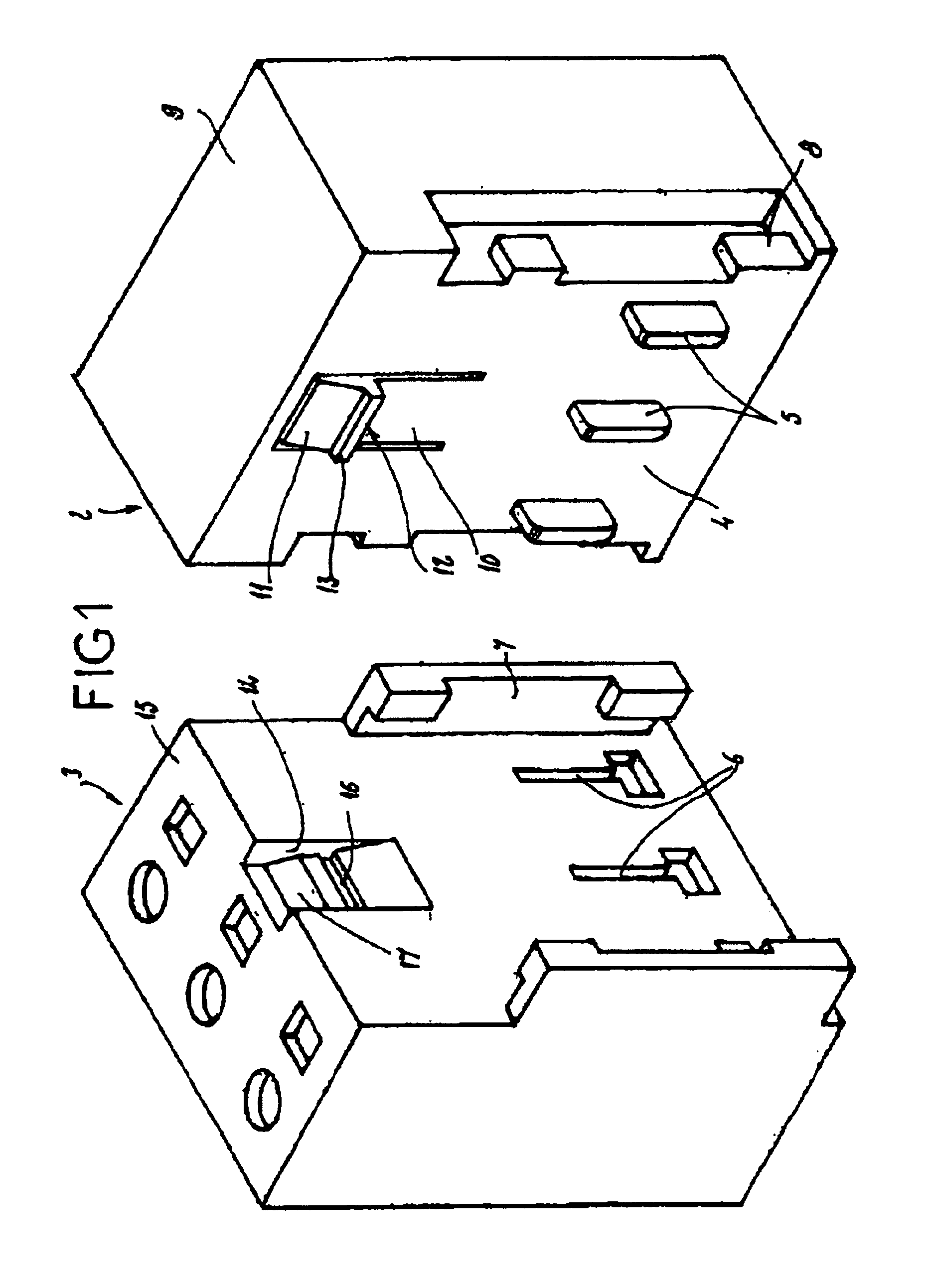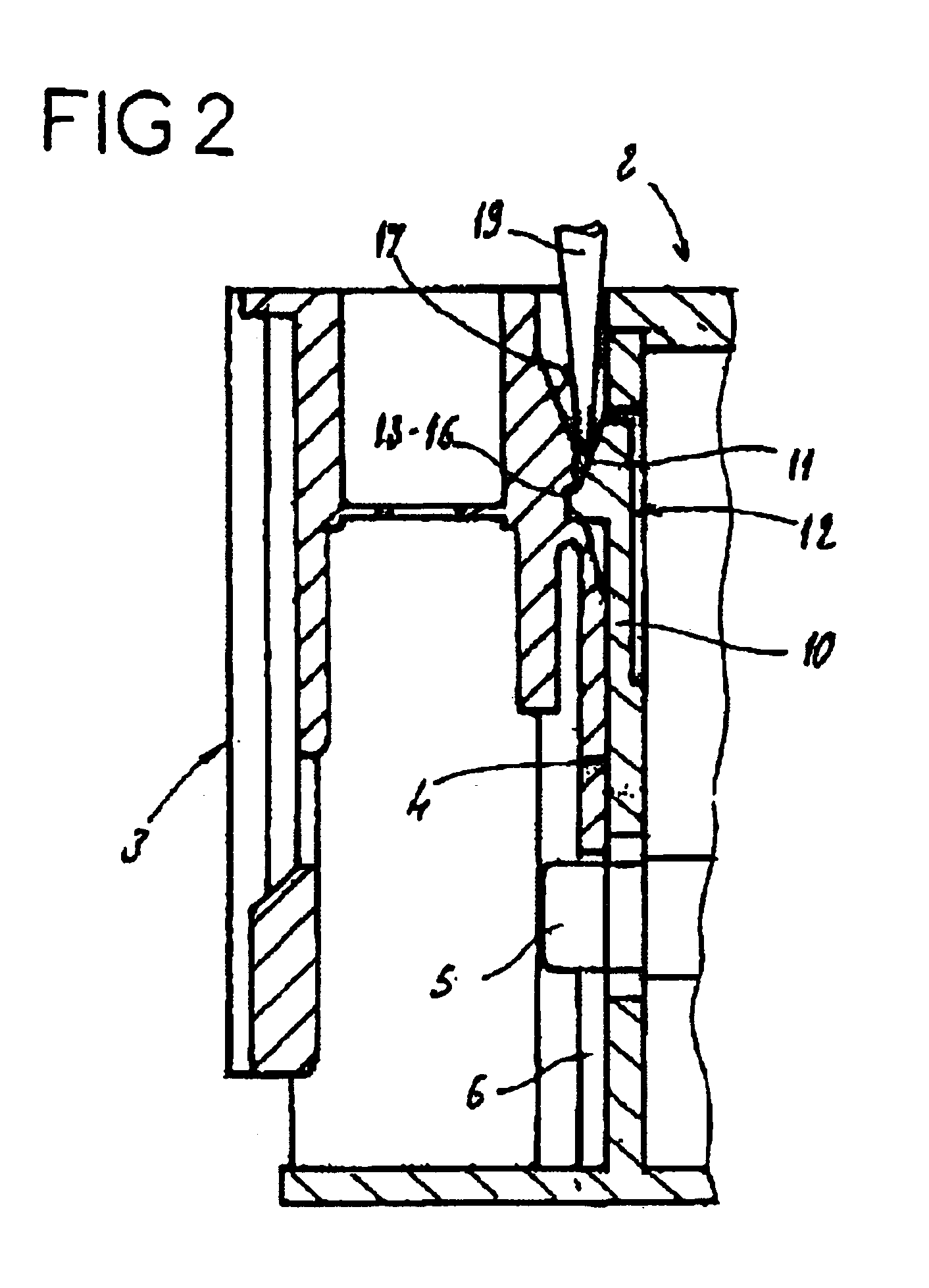Connection device for an electronic box
- Summary
- Abstract
- Description
- Claims
- Application Information
AI Technical Summary
Benefits of technology
Problems solved by technology
Method used
Image
Examples
first embodiment
In the first embodiment shown in FIGS. 1 and 2, the box has, on its mating face and near its upper face 9, a resilient tab 10 having a hook 12 formed by a horizontal rib 13. Between the upper face of the box and the rib 13, the hook 12 has an inclined surface 14 angled downward and outward.
It should be noted that the notions of upper face of the box and of the module are relative positions used conventionally in the present description. It goes without saying that it will be possible for the face 9 of the box not to be the upper face if the box were to occupy another position in space.
The connection module 3 has, in its mating face, a recess 14 opening into its upper face 15. Provided in this recess is a transverse groove 16 intended to accommodate the rib 13 of the hook 12. Provided above the groove 16 is a surface 17 inclined downward and outward.
FIG. 2 shows a sectional view of the box and the module in the mated position. It is apparent from this figure that, in the mating posit...
second embodiment
FIGS. 3 to 6 show this device, in which the same elements are denoted by the same reference numbers as previously.
In this device, the module 3 has, in its mating face, a recess 22 in which an unlocking piece, comprising a stud 23, is mounted so as to slide. Articulated to the stud 23 at 24 is a rigid arm 25, the free end 26 of which is engaged between a bottom stop 27 and a top stop 28. When the module is in the locking position on the box, the bottom stop 27 serves to catch an elastically deformable hook 29 mounted on the box. When the module is mounted on the box, as is the case in the embodiment shown in FIG. 4, a stop 30 protruding from the mating face of the box is located slightly below the bottom stop 27 of the module. FIG. 4 shows the module in the mated position on the box. In this position, the hook 29 is engaged behind the bottom stop 27. When the operator exerts vertical pressure on the sliding stud 23, the latter is pushed into the recess 22 and the arm 25 pivots at the...
third embodiment
FIGS. 7 to 11 show this device, in which the same elements are denoted by the same reference numbers as previously.
In this case, the box 2 has, in its mating face, an elastically deformable tab 32 located approximately at mid-width of this face and comprising two locking hooks 33 situated on either side of a central unlocking rib 34. The central unlocking rib extends beyond the two hooks 33. Each hook 33 has from the top down an engagement surface 35 inclined downward and outward and an engagement surface 36 for the purpose of locking, perpendicular to the mating plane of the box and of the module. The mating face of the box 2 has, below the tab 32, two symmetrical fixed stops 37.
The connection module 3 includes, in its mating face, an unlocking piece 38 mounted so as to slide parallel to the mating plane and accessible from the upper face of the module. This unlocking piece has a central drive rib 39 having a surface 40 inclined downward and inward, intended to bear, during unlocki...
PUM
 Login to View More
Login to View More Abstract
Description
Claims
Application Information
 Login to View More
Login to View More - R&D
- Intellectual Property
- Life Sciences
- Materials
- Tech Scout
- Unparalleled Data Quality
- Higher Quality Content
- 60% Fewer Hallucinations
Browse by: Latest US Patents, China's latest patents, Technical Efficacy Thesaurus, Application Domain, Technology Topic, Popular Technical Reports.
© 2025 PatSnap. All rights reserved.Legal|Privacy policy|Modern Slavery Act Transparency Statement|Sitemap|About US| Contact US: help@patsnap.com



